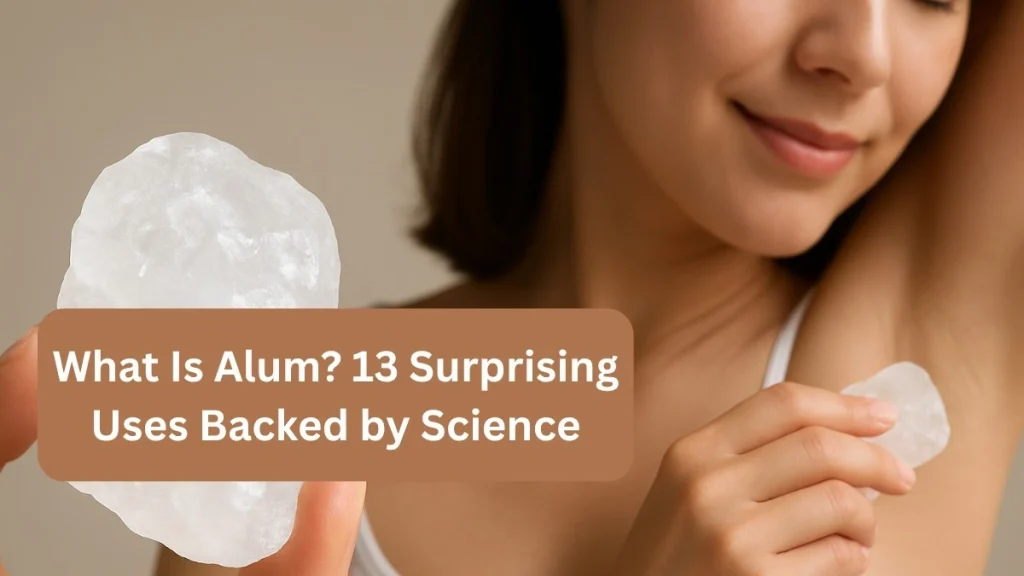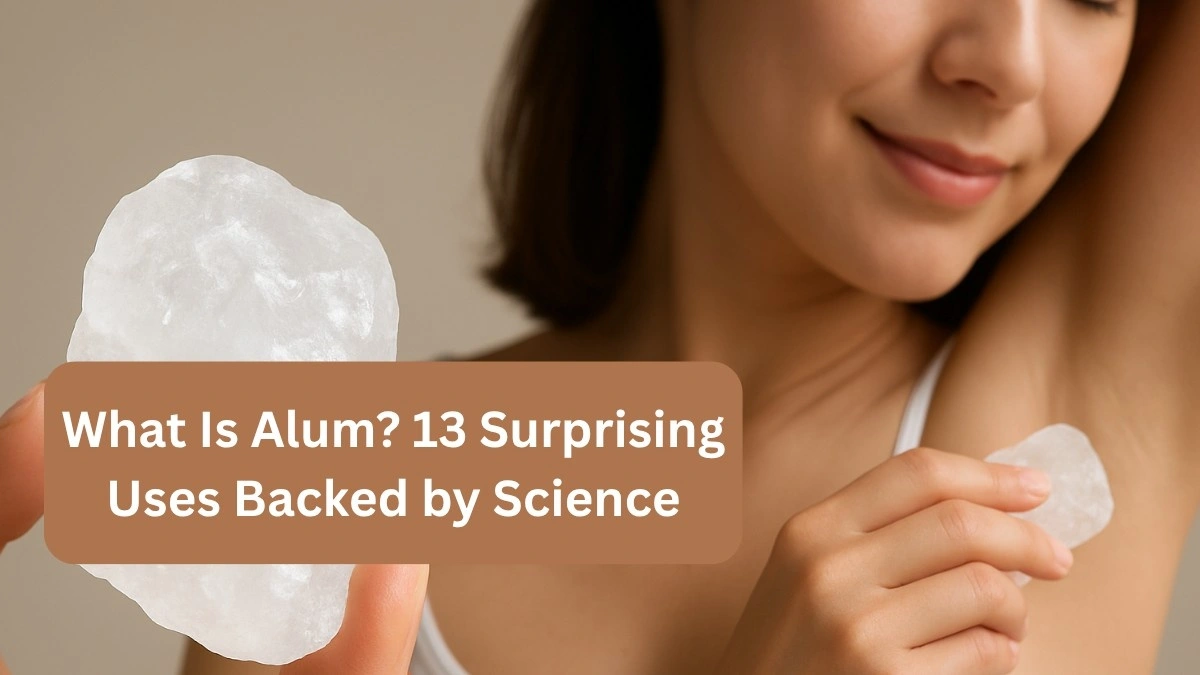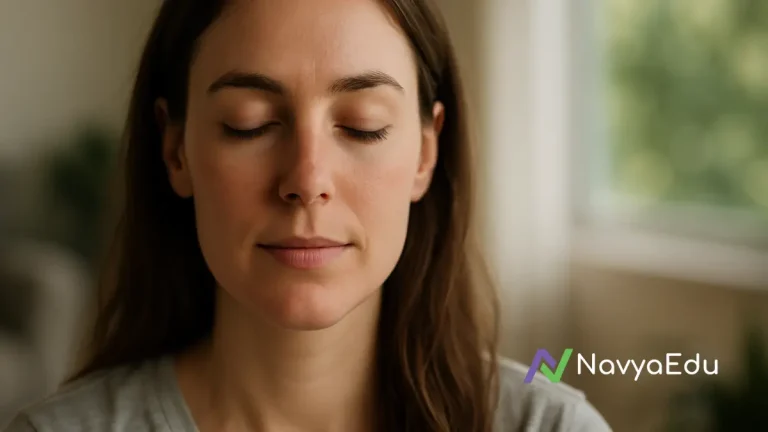When Grandma’s Crystal Solved My Skin Woes…
When I first heard about alum, I thought it was just that odd crystal my grandmother rubbed on my grandfather’s chin after shaving. It looked like a relic from the past—something you’d find in an old Ayurvedic box, not in modern skincare aisles.
But one monsoon morning, when I developed a persistent fungal itch that even medicated creams failed to soothe, my mother handed me a tiny white rock—fitkari, she called it. Skeptical but desperate, I gave it a try.
What happened next changed the way I looked at traditional remedies forever.
Not only did the itch vanish in days, but my skin felt firmer and clearer. I started reading more and discovered that alum isn’t just an old wives’ tale—it’s backed by both ancient wisdom and modern science.
Let’s uncover the forgotten power of this humble crystal.

What Is Alum?
Alum is a naturally occurring mineral salt, typically found in a crystalline form. The most common type used for household or medicinal purposes is potassium alum (or potash alum), often called fitkari in India.
It’s colorless or white, mildly astringent, and dissolves in water. Traditionally used in water purification, wound healing, and shaving, alum’s relevance dates back centuries.
🏺 A Bit of History
- Ancient Romans used it for dyeing fabrics and healing wounds.
- Ayurveda and Unani medicine prescribed alum for ulcers, bleeding, and oral health.
- In rural Indian homes, it still sits beside the shaving kit or tucked into kitchen shelves.
And while modern skincare is obsessed with high-tech serums, alum’s simplicity holds powerful secrets—13 of them, in fact.
13 Surprising Uses of Alum (Backed by Science + Tradition)
1. Alum for Skin Tightening and Acne
Its astringent properties help shrink pores, reduce oiliness, and calm inflammation—perfect for acne-prone skin.
💡 “I applied a diluted alum solution on my cheeks for two weeks—my skin looked clearer and less oily.”
2. Natural Deodorant Alternative
Alum fights odor-causing bacteria without blocking sweat glands. It’s fragrance-free, chemical-free, and safe for sensitive skin.
✅ Use alum blocks or deodorant stones underarms after showering.
3. Treating Small Cuts & Shaving Nicks
That sting you feel when you rub alum post-shave? It’s the antiseptic action closing up micro-cuts and preventing infection.
⚠ Avoid overuse—it can dry the skin.
4. Tightens Gums & Fights Bad Breath
Mix a pinch in warm water and gargle to kill mouth bacteria and heal minor oral ulcers.
🪥 Ayurvedic texts describe alum as a “rakta stambhak” or blood-stopper in gum bleeding.
5. Fungal Infections & Athlete’s Foot
Alum’s antifungal properties make it effective in treating sweat-related fungal issues in feet and underarms.
✅ Soak feet in warm water with alum twice a week.
6. Water Purifier
Still used in villages, alum helps settle dirt particles and bacteria from muddy water.
🌊 WHO acknowledges alum as a traditional water purification agent in emergency kits.
7. Dandruff Control
Mixed with rose water or curd, alum can reduce flakiness and itching of the scalp.
💆♀️ Modern trichologists acknowledge alum’s role in balancing scalp pH.
8. Afterbite Relief for Mosquito Bites
Rub alum powder paste on mosquito or insect bites to reduce itching and swelling.
9. Natural Tooth Powder
Used for generations in powdered form with clove or neem for oral hygiene.
⚠ Use only once or twice a week to avoid enamel damage.
10. Wrinkle Reducer
As an astringent, alum can temporarily reduce the appearance of fine lines by tightening the skin.
🔬 Dermatology journals note that potassium alum contracts skin tissue, giving a lifting effect.
11. Body Odor in Shoes
Keep a small alum crystal in shoes overnight to absorb moisture and neutralize odor.
12. Tonsillitis & Throat Pain Relief
A warm alum gargle can soothe inflamed tonsils and reduce bacterial growth.
13. Hemorrhoid Relief (Ayurvedic Use)
Used with turmeric as a sitz bath ingredient to shrink piles and ease discomfort.
💬 Backed by Science & Tradition
- According to Ayurveda, alum is “Shodhana” (purifier), “Stambhak” (blood coagulant), and “Krimighna” (antimicrobial).
- Modern science agrees: Alum exhibits antimicrobial, antifungal, astringent, and styptic (bleeding stopper) properties.
- A study published in PubMed confirmed its efficacy in wound healing and odor control.
⚠ Safety Tips:
- Do not consume alum unless under professional supervision.
- External use only for most DIYs.
- Avoid on broken skin or in large amounts—can cause irritation.
🛠 How to Use Alum at Home
For Acne:
- Dissolve a small pinch of powdered alum in rose water.
- Dab lightly on affected area with a cotton ball.
- Rinse after 15 minutes.
⚠ Avoid contact with eyes or lips.
For Dandruff:
- Mix 1 tsp alum powder + 2 tsp curd.
- Apply on scalp for 20 minutes before washing.
- Use twice a week.
For Oral Health:
- Dissolve ½ tsp alum in a glass of warm water.
- Gargle once daily.
✅ Safe for short-term use.
⚠ Side Effects & Precautions
While alum is generally safe externally, overuse or misuse can cause:
- Skin dryness or irritation
- Tooth enamel erosion (if used too frequently as powder)
- Burning sensation on sensitive skin
Who Should Avoid Alum:
- Children under 5
- Pregnant or breastfeeding women (internally)
- People with sensitive or allergy-prone skin
🩺 Always consult your doctor before trying any home remedy.
🧪 My Experience: “I Used Alum for 15 Days—Here’s What Happened”
Skeptical at first, I tried alum spray on my underarms and scalp for 15 days.
By the end of week one:
- I noticed less sweat odor despite the humid weather.
- My scalp itching reduced, and flakes were visibly fewer.
By day 15:
- My underarm skin felt smoother and less irritated.
- No redness, no side effects—just a subtle shift towards feeling fresher naturally.
It’s not magic, but it’s gentle, effective, and time-tested.
🧂 Alum vs. Alternatives
| Feature | Alum | Baking Soda | Modern Deodorants |
|---|---|---|---|
| Antibacterial | ✅ Strong | ✅ Moderate | ✅ Strong |
| Skin Irritation Risk | ⚠ Mild | ⚠ High (alkaline) | ⚠ Depends on chemicals |
| Fragrance-Free | ✅ Yes | ❌ No | ❌ No |
| Cost | 💰 Very Low | 💰 Low | 💰 High |
🙌 Sometimes, old is gold. Alum proves that simplicity can beat complexity.
FAQs:
What happens if I use alum daily?
Using alum daily on skin or mouth may cause dryness or irritation. It’s best used 2–3 times a week.
Can I use alum for dandruff?
Yes, alum mixed with curd or water can help reduce dandruff due to its antifungal properties.
Is alum safe for underarms?
Yes, when used as a deodorant crystal or in diluted form. Avoid on freshly shaved skin.
Can alum whiten teeth?
It can clean teeth but is not a bleaching agent. Frequent use may erode enamel—use cautiously.
How do I use alum for pimples?
Apply a diluted paste of alum powder with rose water to dry out pimples naturally.
Can I drink water purified with alum?
Yes, but only after proper settling and filtration. Do not consume alum directly.
Is alum good for hair?
Alum can help control dandruff and itchy scalp but may dry out hair. Always use with a moisturizer like curd or oil.
Is fitkari the same as alum?
Yes, “fitkari” is the Hindi word for alum, typically referring to potassium alum.
🌟 Conclusion: The Crystal That Time Forgot
Alum may not come in fancy packaging or viral ads, but its value is timeless. From shaving cuts to scalp itch, from water purification to oral hygiene, this humble white rock has touched lives quietly across centuries.
In a world chasing trends, maybe it’s time we pause and look back at remedies that actually worked—with simplicity, safety, and soul.
👉 If you’re looking for a natural remedy that’s stood the test of time, alum might just surprise you. Try it. Feel the difference. Let wisdom meet wellness.
NOTE: This article is for educational purposes only. Always consult a licensed healthcare provider before starting any remedy.




